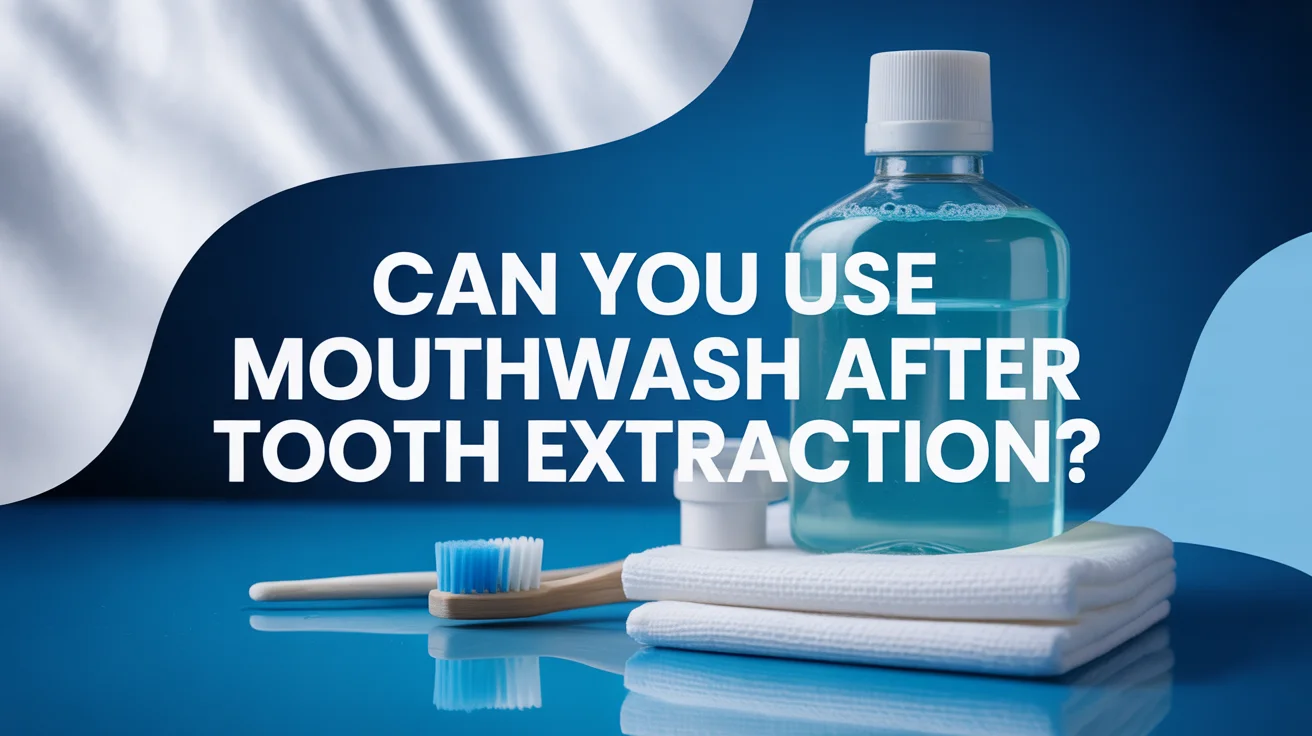Tooth extraction, whether for wisdom teeth or other dental issues, requires careful post-operative care to ensure proper healing and prevent complications. A common question patients ask is, Can you use mouthwash after tooth extraction? This article explores the safety, timing, and best practices for using mouthwash during recovery, structured using the Koray SEO framework for clear, authoritative content.
Tooth extraction involves removing a tooth from its socket, often due to decay, impaction, or crowding. After the procedure, a blood clot forms at the extraction site, which is essential for healing and protecting the underlying bone and nerves. Improper care, including inappropriate use of mouthwash, can dislodge this clot, leading to complications like dry socket (alveolar osteitis) or infection. The recovery period typically spans 7–10 days, with the first 24–48 hours being critical.
Is It Safe to Use Mouthwash After Tooth Extraction?
The safety of using mouthwash after a tooth extraction depends on the timing, type of mouthwash, and how it’s used. Dentists provide specific guidelines to promote healing while maintaining oral hygiene.
-
First 24 Hours: Avoid using mouthwash entirely during the first 24 hours post-extraction. Vigorous rinsing or swishing can dislodge the blood clot, increasing the risk of dry socket—a painful condition where the socket becomes exposed. Instead, follow your dentist’s instructions, which may include gently rinsing with a prescribed saline solution (saltwater) after 24 hours.
-
Days 2–7: After the initial 24 hours, gentle rinsing with a dentist-recommended mouthwash or saltwater solution is often safe and beneficial. Saltwater (1 teaspoon of salt in 8 ounces of warm water) is commonly advised as it’s gentle, reduces bacteria, and promotes healing without irritating the site. If using a commercial mouthwash, choose an alcohol-free, antiseptic formula to avoid stinging or drying the extraction site.
-
After 7 Days: Once the extraction site has sufficiently healed (typically after 7–10 days), you can resume regular use of mouthwash, provided there are no complications like pain, swelling, or infection. Continue using alcohol-free mouthwash if sensitivity persists.
Risks of Using Mouthwash Too Soon
Using mouthwash improperly or too early can lead to complications:
-
Dry Socket: Vigorous rinsing or using a harsh mouthwash in the first 24–48 hours can dislodge the blood clot, exposing the socket and causing severe pain.
-
Irritation: Alcohol-based mouthwashes can irritate the sensitive extraction site, delaying healing or causing discomfort.
-
Infection: While antiseptic mouthwashes reduce bacteria, improper use (e.g., too early or too aggressive) may introduce bacteria to the site or disrupt healing.
Best Practices for Using Mouthwash Post-Extraction
To safely incorporate mouthwash into your recovery routine, follow these guidelines:
-
Wait 24 Hours: Avoid any rinsing, including mouthwash, for the first 24 hours to protect the blood clot.
-
Use Saltwater Initially: Starting on day 2, gently rinse with a warm saltwater solution 2–3 times daily, as recommended by most dentists. Swish gently for 30 seconds and let the liquid flow out without spitting forcefully.
-
Choose Alcohol-Free Mouthwash: If your dentist approves commercial mouthwash, opt for an alcohol-free, antiseptic version (e.g., chlorhexidine, if prescribed) to minimize irritation and support oral hygiene.
-
Rinse Gently: Avoid aggressive swishing or gargling, which can disrupt the extraction site. Tilt your head to let the liquid move gently over the area.
-
Follow Dentist’s Instructions: Your dentist may prescribe a specific mouthwash, like chlorhexidine, to prevent infection. Use it exactly as directed, typically for 7–14 days.
Factors Influencing Mouthwash Use
Several factors determine when and how to use mouthwash:
-
Extraction Type: Surgical extractions (e.g., impacted wisdom teeth) may require stricter precautions than simple extractions, as they involve deeper incisions and longer healing times.
-
Individual Healing: Conditions like smoking, diabetes, or poor oral hygiene can slow healing, necessitating cautious use of mouthwash.
-
Dentist Recommendations: Always prioritize your dentist’s post-operative instructions, as they’re tailored to your specific case.
When to Consult Your Dentist
Contact your dentist if you experience:
-
Persistent or worsening pain
-
Swelling, redness, or pus at the extraction site
-
A bad taste or odor, which may indicate infection
-
Difficulty rinsing without discomfort
These symptoms could signal complications like dry socket or infection, requiring professional attention.
Using mouthwash after a tooth extraction is generally safe after the first 24 hours, provided you use a gentle, alcohol-free formula or saltwater solution and rinse carefully. Avoid vigorous rinsing or alcohol-based mouthwashes early in recovery to prevent dry socket or irritation. Follow your dentist’s guidance and prioritize oral hygiene to support healing. For personalized advice, consult your dental professional to ensure your recovery stays on track.
